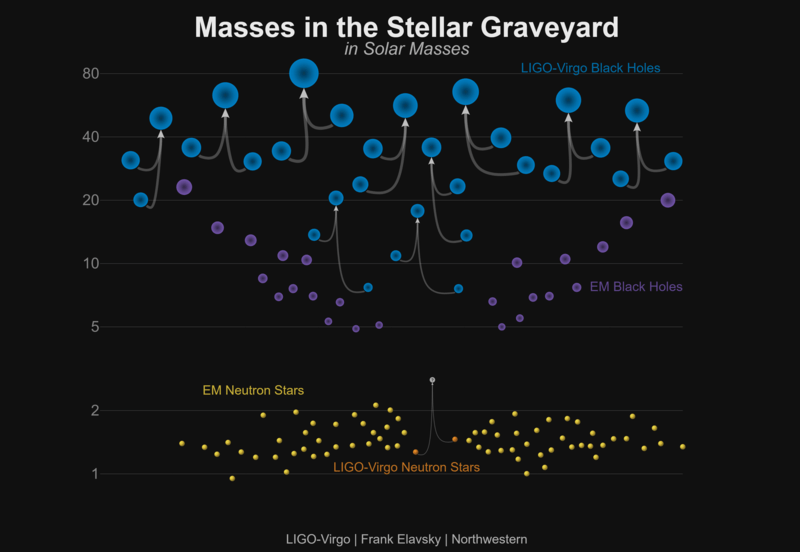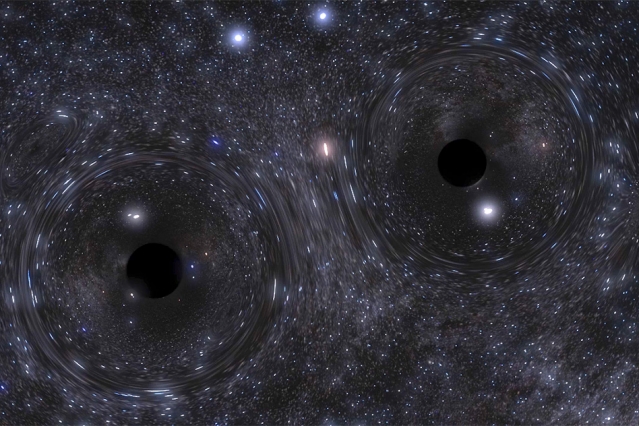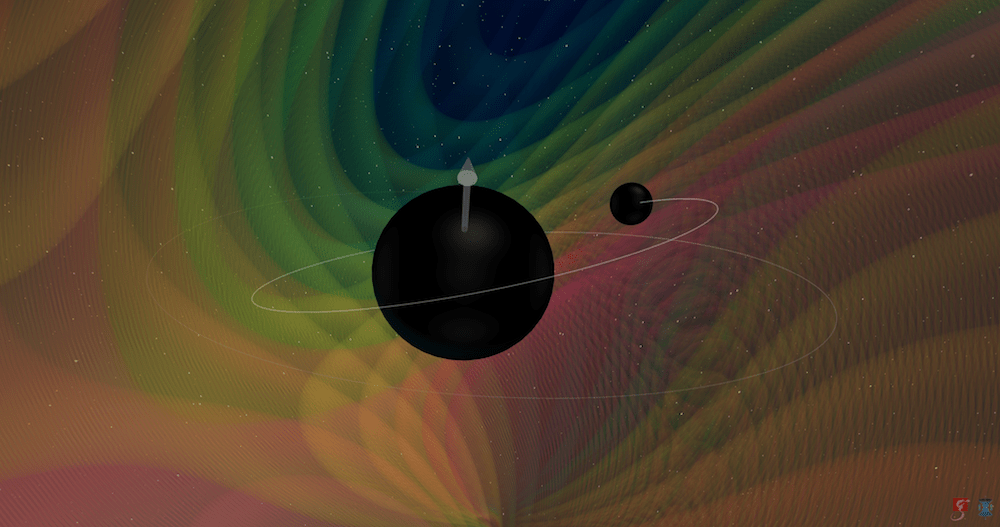In another first, scientists at the LIGO and Virgo gravitational wave detectors announced a signal unlike anything they’ve ever seen before. While many black hole mergers have been detected thanks to LIGO and Virgo’s international network for detectors, this particular signal (GW190412) was the first where the two black holes had distinctly different masses.
The event was observed by both LIGO and Virgo on April 12th, 2019, early in the detectors’ third observation run (O3). According to the study that describes the find, which recently appeared online and the LIGO website, GW190412 took place about 1.9 to 2.9 billion light-years from Earth. It involved the merger of two black holes weighting approximately 8 and 30 Solar masses, respectively.
The event is unique in the history of gravitational wave astronomy since all binaries observed previously by the LIGO and Virgo detectors consisted of two roughly similar masses. Analyses reveal that the merger happened at a distance of 1.9 to 2.9 billion light-years from Earth. The new unequal mass system is a unique discovery since all binaries observed previously by the LIGO and Virgo detectors consisted of two roughly similar masses.

This sharp difference in mass allowed the LIGO/Virgo scientists to verify something predicted by Einstein’s General Theory of Relativity, which has so far remained untested. Frank Ohme is the leader of the Independent Max Planck Research Group – aka. the “Binary Merger Observations and Numerical Relativity” – at the Albert Einstein Institute (AEI). As he stated in a recent AEI press release:
“For the very first time we have ‘heard’ in GW190412 the unmistakable gravitational-wave hum of a higher harmonic, similar to overtones of musical instruments. In systems with unequal masses like GW190412 – our first observation of this type – these overtones in the gravitational-wave signal are much louder than in our usual observations. This is why we couldn’t hear them before, but in GW190412, we finally can.”
These observations once again confirms the theory of General Relativity (GR), which states that massive objects alter the curvature of space time and cause “ripples” – aka. gravitational waves – when they merge. The theory also predicts that binary systems where two objects are vastly different in terms of mass will introduce higher “harmonics” into the waveform.
When the LIGO and Virgo collaborations examined the signal produced by GW190412, they observed this very phenomenon at work for the first time in history. In short, the fundamental frequency of the GWs were two or three times higher than what has been observed with all other events that have been detected so far.

Says Roberto Cotesta, a PhD student in the “Astrophysical and Cosmological Relativity” division at the AEI in Potsdam:
“The black holes at the heart of GW190412 have 8 and 30 times the mass of our Sun, respectively. This is the first binary black-hole system we have observed for which the difference between the masses of the two black holes is so large! This big mass difference means that we can more precisely measure several properties of the system: its distance to us, the angle we look at it, and how fast the heavy black hole spins around its axis.”
Another benefit of this latest detection is that it allowed the team to measure the system’s astrophysical properties with greater precision. In short, unequal masses imprint themselves on a GW signal, which in turn allows scientists to more precisely measure properties like the mass and spin of the merging objects, as well as the distance to the source and angle of observation.
Essential to this was the accurate models of GWs produced from coalescing black holes, which were provided by researchers from the Albert Einstein Institute. For the first time, these models included both the precession of the black-holes’ spins and multipole moments beyond the dominant quadrupole – which were crucial to measuring their properties and carrying out tests of GR.

The Institutes high-performance “Minerva” and “Hypatia” computer clusters at AEI Potsdam and “Holodeck” at AEI Hannover also played a significant role in the analysis of the signal. According to Alessandra Buonanno, the director of the “Astrophysical and Cosmological Relativity” division at the AEI, this type of unique signal is something that the two previous observations runs failed to detect. As she said:
“During O1 and O2, we have observed the tip of the iceberg of the binary population composed of stellar-mass black holes. Thanks to the improved sensitivity, GW190412 has begun to reveal us a more diverse, submerged population, characterized by mass asymmetry as large as 4 and black holes spinning at about 40% the possible maximum value allowed by general relativity.”
Another reason why this kind of observation was not possible before has to do with the recent upgrades made at all the detectors in the LIGO/Virgo international network. This includes a new technique where the quantum-mechanical properties of the lasers used by LIGO and Vigro are “squeezed” to enhance the sensitivity of the detectors.

This technique was pioneered by researchers at the German-British GEO600 detector in South Hanover, Germany – designed and operated by scientists from the Max Planck Institute and multiple European universities. The technique has improved the sensitivity of the GEO600 detector by a factor of two and the AEI is leading the global effort to maximize the effectiveness of the “light squeezing” technique further.
When the first GW event was detected by scientists at LIGO in February of 2016, it signaled a new age in astronomy. In just over four years, improvements made to individual detectors and international collaborations have ushered in an era where events are being detected every week.
With every new detection, we are learning more about the exotic physics that power our Universe. Be sure to check out this simulation of what the GW190412 merger looked like, courtesy of the Albert Einstein Institute:
Further Reading: Albert Einstein Institute, LSC

